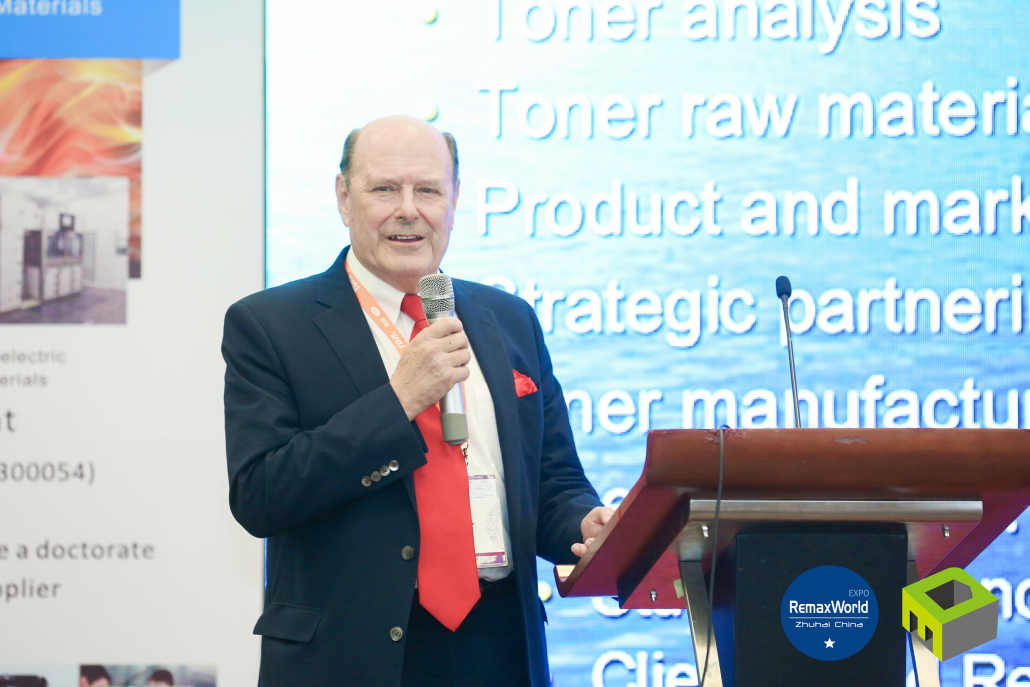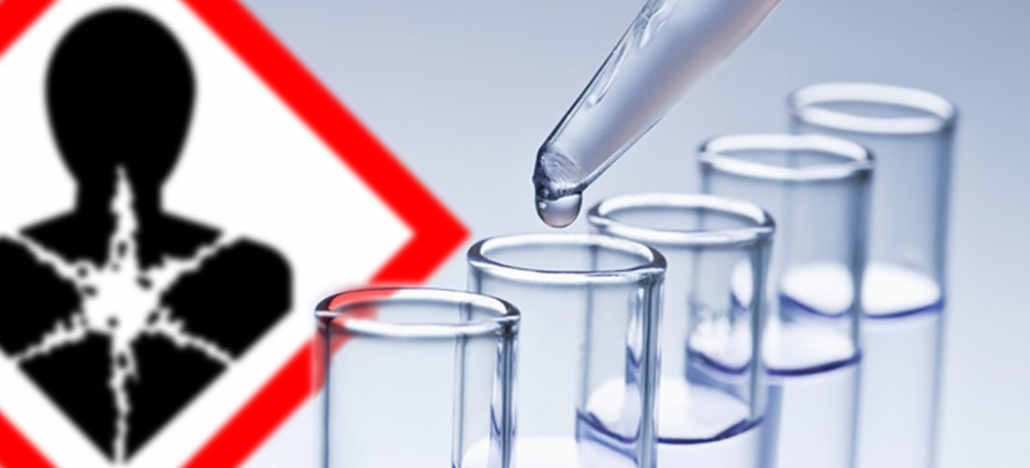Facts and Lies over the Toxins in Your Printer Cartridges
Facts and Lies over the Toxins in Your Printer Cartridges.
- In your opinion, Graham, why has there been such recent interest in the use of flame retardant decaBDE chemicals in printer cartridges?
 The interest has been generated by genuine environmental impact concerns and by the competitive opportunity presented to try to gain a possible advantage over competitors.
The interest has been generated by genuine environmental impact concerns and by the competitive opportunity presented to try to gain a possible advantage over competitors.
In general, there is certainly great concern amongst the general public about the environment. Concern has been elevated over emissions as well as pollution. European authorities have lead the way on concerns about the environmental impact and the potential human impact of specific chemicals common in use. The responsible body in the EU, the European Chemicals Agency or ECHA added the commonly used fire retardant chemical deca Diphenyl Ether or decaBDE to it’s candidate list of persistent, bioaccumulative and toxic chemicals or PBTs in 2014. This agency’s recommendation was subsequently written into European law. Other countries have followed the lead of the Europeans to some extent though not as stringently.
The global market for printer supplies continues to be a fierce battleground for share amongst the OEMs, the cartridge remanufacturers and the new build cartridge manufacturers. Analysis of new build cartridges flooding into Europe over recent years has been intense. It has largely been focused on patent infringement. However, now a new front has opened up with the realization that the plastic used for the plastic cartridge components in new build cartridges contain brominated flame retardant and notably decaBDE. Since the trade press highlighted the content of decaBDE in toner cartridges in May of 2018 there has been accentuated attention to the use of this flame retardant in cartridges. This has particularly been by remanufacturers that are suffering from the growing popularity of clones and patent free new builds. Clearly their attention has been part of the campaign to deter the consumers from buying less expensive competitive products from Asia.
The conjecture spread by some industry players and influencers that all Chinese or Asian new built cartridges are toxic, hazardous and harmful is not a true representation of the facts. It is certainly undesirable to perpetuate the use of chemicals such as decaBDE that have been shown to be persistent environmental pollutants. If landfilled toner cartridges present a comparatively small source of decaBDE into the environment. Measures to dramatically reduce and possibly eliminate the use of such materials is possible and necessary. However, we have been living with decaBDE and its cousins in our homes, furniture, beds, cars, offices, factories, aeroplanes, trains and everywhere in our lives. The amount of these materials into the environment from the casings of toner cartridges is miniscule by comparison with all of these other sources.
That products sold in all jurisdictions need to comply with all regulations in those regions is without question but the tendency to panic because of competition driven rhetoric should be resisted. Remanufacturers and influencers are looking to use this matter to create scandal and thereby try to help them to win back lost market share.
- In separating the facts from the fiction, what are the current findings related to decaBDE flame retardants?
That decaBDE is a persistent organic pollutant is clear. It is ubiquitous and pervasive in our world. It is found in highest concentration in and near recycling plants. It has even been found in the arctic far from any source of the material. Anyone viewing this video is at this very moment exposed to some article or other that contains decaBDE or one of its congeners. This includes the chair on which you are sitting, to the carpet on the floor, the computer keyboard you are touching, the soles of the shoes you are wearing, and to the casing on the tablet or smartphone you are using to view this video. We are all of us no matter where we live exposed.
However, nothing is definitively known about the health effects of decaBDE in humans. The information on its toxicity comes only from animal studies. DecaBDE is not known to cause cancer in humans. The US Department of Health and Human Services has not classified decaBDE as a carcinogen and the Environmental Protection Agency has assigned Group D status to decaBDE – that it is not classifiable as to human carcinogenicity however it has stated that there is suggestive evidence of carcinogenic potential.
Studies by the Australian Government, Department of Health recently reported that decaBDE exhibits low acute oral, skin and inhalation toxicity and very low skin absorption in animals. DecaBDE is not a skin or eye irritant and is not cytogenetic i.e. has no affect on DNA. They say that repeated ingestion shows low systemic toxicity even at a high level and that a clear interpretation of the significance for human health has not been established. Japan’s National Institute of Technology and Evaluation has stated that decaBDE is of low concern in consumer products and that it poses low risk. Their sub agency Chemical Management Centre has found that even when exposure amount of decaBDE was very high that the risk was still low.
DecaBDE is a stable, solid material with extremely low volatility so there is no significant exposure to vapor at ambient temperature. It has a melting point of 295°C and a boiling point of 425°C way below the temperature of a fuser system in a toner-based printer like a laser printer. The maximum fuser roll surface temperature in a laser printer is about 185°C. At this temperature any decaBDE at no matter what concentration is going to remain solid in the cartridge casing during the life of the cartridge. No vapor of the material will be produced during use.
DecaBDE is not water soluble either. It has a miniscule likelihood of polluting ground water as a result of landfilling. Public exposure to the material is dominated by indirect exposure from the environment rather than actual articles. Inhalation or ingestion of decaBDE-containing dust released from articles in a house, vehicle or workplace are the major sources. Dust is the main vector by which decaBDE is distributed in the environment. This is because it is oleophilic and readily adheres to fatty or greasy materials. Gradual breakdown of plastic household, automotive or vehicular components and items in the office and workplace create dust containing the material and the dust is carried by air currents in their distribution.
The chemical decaBDE is certainly a Persistent Organic Pollutant but based on the current evidence its affect on human health is not categorically known.
- How impacted are we by brominated flame retardants in our daily lives, and how might this be in the future?
Toner catridges even with higher content of decaBDE are not toxic, hazardous or harmful in use. Touching, using or working with toner cartridges or using a laser printer is not dangerous to your health from the risk of exposure to decaBDE. A person’s exposure risk is greater when sitting on their couch at home watching tv, using their smartphone or tablet and even sleeping on their mattress at night in their bedroom that from the personal laser printer next to their desk in their office.
This danger will persist. Legislation however restrictive will not remove exposure to decaBDE or other brominated flame retardants now or in the future in the medium or short term. Legislation currently in place and proposed does not actually ban the use of brominated flame retardants but restricts the concentration of such materials in plastic products. Indeed, more than this there are exceptions to the restrictions in certain product categories. Those that notably affect the general public include in aircraft, motor vehicles and some electronic equipment. In these product categories there are no restrictions. Beyond this brominated flame retardants have been in common use in all manner of products in the home, office and workplace for over 30 years and there is a substantial inventory in the world of items that will remain in service for years to come. Its just not feasible to dispose of all of these items and try to replace them with new. Some experts estimate that these legacy items that are in place now will be in our lives for at least 25 more years. The conundrum is what we do with these items at end of life to safely dispose of them mitigating any risk of persistent pollution. Recycling helps. However, use of recycled plastic as feedstock for new items must without question be done so as to comply with legislation I the markets where those items are sold. This is a challenging task.
In the USA with the new proposed legislation from the EPA this agency is not proposing to prohibit recycling of plastic from articles containing DecaBDE so long as no new DecaBDE is added. They say that they recognize the importance and impact of recycling, which helps protect the environment by keeping valuable materials out of landfills. They also say that the US recycling industry is important in providing 757,000+ jobs and $6.7 billion annually in taxes. They do not plan to hamper recycling and believe that overly burdensome restrictions on recycling plastics containing DecaBDE to be impractical and time consuming.
A practical and economically prudent approach is needed to the issue of the manufacture, use and disposal of articles containing decaBDE along with the mitigation of risks to the environment and consequently humans. This needs to be combined with the implementation of strategies to replace this flame retardant with other materials or use of other means to provide articles with low or non-flammability.
The bottom than is for the consumer don’t panic, for industry to make sure of compliance with regulations and for society to move forward to positively improve the protections for our world.
Watch the Graham Galliford’s interview via RTMWorld website, or click HERE.






So Graham, you are basically saying, it is okay somebody is violating rules because everybody does and the decaBDE is everywhere. That’s stupid and I see this article as sponsored by one of clone producers and just one-sided. You provided no solution.
No. I am not saying that it is OK for any company to violate rules. It may be that some companies do violate rules regarding brominated flame retardants but that is no reason for any company to do similarly. I am saying that all companies must comply with the regulations that apply in the territories where they market products. What I am highlighting is that firstly there is so much legacy plastic product of all types in our world that brominated flame retardants will be with us and being released into the environment for a very long time to come. Current regulations will help to minimize but not eliminate these materials from the environment. Furthermore, even the restrictive regulations in force and proposed do not apply to some very important categories of product, so for the short term at least these products will continue to be produced and marketed and contain these pollutants. I am saying that there are, in product design, physical and chemical strategies that can and should be used to provide a minimization of fire hazard to help reduce the amount of flame retardant potentially at risk of being released into the environment.
I have written this article to try to give balance to this issue which had hitherto been a monologue of misinformed scare mongering. I take exception to your accusation that this was a piece was sponsored by a clone producer. I wrote it independently as an independent observer hoping to help the industry to understand the reality of the matter.